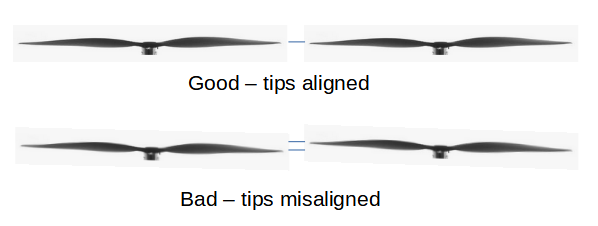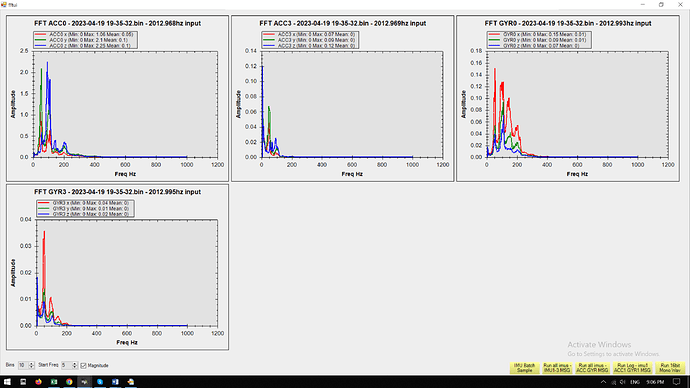Hi Mr Swawn,
Thanks for all your help and the settings.
I did some test flights today and their results were very encouraging!!!
I performed a total of 3 flights and their log files are shown below:
In this flight, I used all your parameter settings. The copter was quite stable in Stabilize and Althold flight modes. In Loiter mode, I think that the aircraft behaviour was a bit strange, but quite safe.
In this flight, I used your parameter settings, except:
INS_HNTCH_FREQ =100 (= FFT_FREQ_HOVER for my aircraft)
INS_HNTCH_BW=50
INS_HNTCH_REF=0.3 (percentage of throttle required for my aircraft hovering)
The aircraft behaviour was similar to the previous case.
Finally, in this flight, I used your parameter settings, except:
FFT_ENABLE=1
FFT_FREQ_HOVER=100
FFT_BW_HOVER=40
FFT_ATT_REF=15
FFT_HMNC_FIT=10
FFT_HMNC_PEAK=0
FFT_MAXHZ=300
FFT_MINHZ=25
FFT_NUM_FRAMES=0
FFT_SAMPLE_MODE=0
FFT_SNR_REF=20
FFT_THR_REF=0.35
FFT_WINDOW_OLAP=0.75
FFT_WINDOW_SIZE=256
INS_HNTCH_ENABLE=INS_HNTC2_ENABLE=1
INS_HNTCH_FREQ=INS_HNTC2_FREQ=100
INS_HNTCH_BW=INS_HNTC2_BW=50
INS_HNTCH_MODE=INS_HNTC2_MODE=4 (FFT setup)
INS_HNTCH_FM_RAT=INS_HNTC2_FM_RAT=1
INS_HNTCH_REF=INS_HNTC2_REF=1
In this case the aircraft could not take off safely, due to high oscillations.




